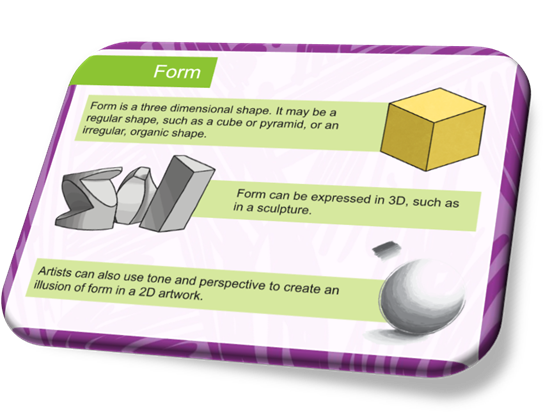Unit 4: Form
 Section 1: Form
Section 1: Form
In this unit, you will learn about the third element
of art. The element, form, is a three-dimensional shape. It may be a regular
shape, such as a cube or pyramid, or an irregular, organic shape. Form can be
expressed in 3D, such as in a sculpture. Artists can also use tone and
perspective to create an illusion of form in a 2D artwork. Form takes up space
in a real or implied way. For example, in paintings and drawings, form is
implied because it is an illusion of three dimensions. The illusion of a three-dimensional
form is transported through the use of lighting and shadows. However, form is
real in sculptures because it takes up three-dimensional space. Form is closely
tied to sculptures because it is three-dimensional and can be seen from more
than one side.
Section 2: Types of
Forms
1. Geometric Forms- forms
that are particular and accurate, such as the basic geometric forms: sphere,
cube, cone, pyramid, and cylinder. A circle becomes a sphere in three
dimensions, a square becomes a cube, and a triangle becomes a pyramid or cone.

2. Organic Forms- are free-flowing, curvy, and are not symmetrical or easily measurable.
Some examples include the shape of flowers, branches, leaves, puddles, clouds,
and animals.

Section 3: Practice
